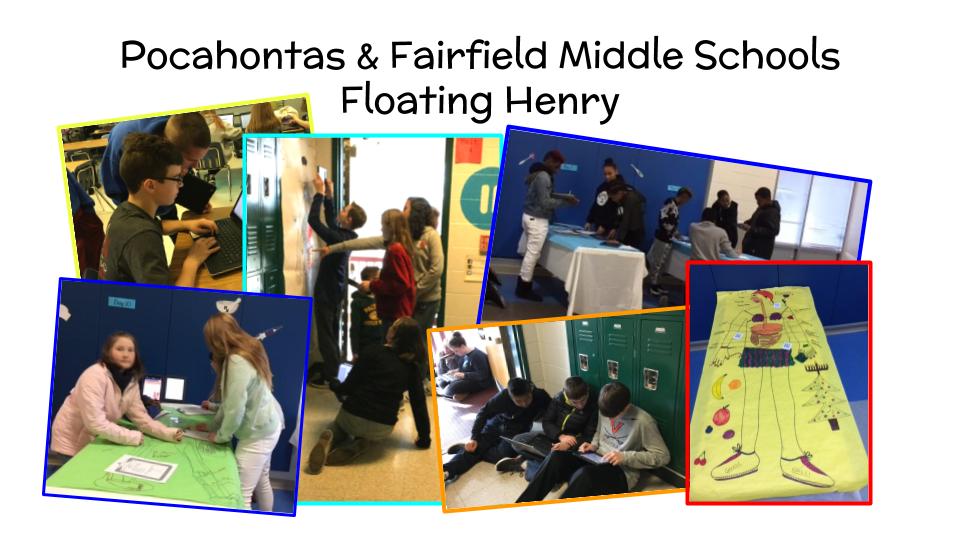Teacher(s) Name: Ms. Ozolins and Ms. Jones
School: Pocahontas MS and Fairfield MS
Grade Level(s): Grade 6, Grade 7, Grade 8
Content Area(s): Health & PE
Lesson Summary
Floating Henry project was a collaborative project done with another school in the county, Fairfield Middle School. Prior knowledge about the body systems was done on the 1st day of the project using Nearpods.This lesson was real-world and authentic and student paced project. The basis of the project was that each school played the role of a patient and a doctor. The patients that the students made from Pocahontas “Memorial” then floated over to Fairfield “Triage” to be diagnosed and vice versa from Fairfield. Each group of “doctors” were responsible for seeing 3 patients and diagnosing those patients. They worked together on diagnosing, treatment plan, and lifestyle changes. Then the patients were delivered back to their original hospital so they could see what the doctors diagnosis was along with the treatment plan. The lesson was very kinthestic and a lot of technology was involved. There were several google forms, audacity was used, and a lot of research. At the end there was a quiz for the students to take as an assessment.
TIPC Ratings
Research & Information Fluency
Rating: Approaching
Explanation:
* Student used modern digital tools to facilitate research and information fluency.
* Students assembled and organize information/data from more than one source to address and authentic task.
* Students used modern tools to powerfully display and interact with information.
Student used teacher provided and individually researched materials to create a scenario for their patient when given a specific disease. Students presented their research using audio recordings of their hypothetical patient as well as through a visual component via Padlet.
Communication & Collaboration
Rating: Ideal
Explanation:
* Student used modern digital tools to facilitate collaboration during class time.
* Students established group norms, formed teams, and organized roles to address an authentic task.
* Students used appropriate modern digital tools to communicate and collaborate with peers and experts, regardless of time zones or physical distances.
Students worked in teams to create their patient illustration, develop the research Padlet, create the patient scenario script and recording. Additionally, the teams created QR codes that were affixed to the illustrations. These QR codes were used to communicate links and resources to the “doctors” at the other location to facilitate their diagnosis of the patient.
Critical Thinking & Problem Solving
Rating: Ideal
Explanation:
* Students justified their decision-making and/or problem-solving practices.
* Students applied teacher-selected modern digital tools to think critically and solve open-ended authentic tasks that require higher order thinking skills.
* Students selected the most appropriate modern digital tools, as well as questioning, critical thinking and problem solving strategies to solve authentic tasks.
During the patient development portion of the project, students used their research and critical thinking skills to create a 30 second patient script that provided symptoms of the illness without overtly providing the diagnosis.
Students also had to troubleshoot the QR codes that were developed to ensure that each code opened to the proper resource for their patient. Students had to troubleshoot permissions and links for each of the resources being provided via the QR codes.
Students used the provided QR codes and materials designed by other students to evaluate the patient symptoms. From that information, student used their research and analysis skills to determine the patient’s illness, determine a course of treatment, and provide suggestions for the patient to lead a more healthy life.
Creativity & Innovation
Rating: Developing
Explanation:
* Student used modern digital tools to facilitate creativity and innovation.
* Students created meaningful, original work within the assignment parameters.
* Students synthesized existing and self-generated knowledge to create new ideas and products within and beyond the assignment parameters.
Students created original patient scenarios, Padlet boards, and audio recordings.
Student Artifact




